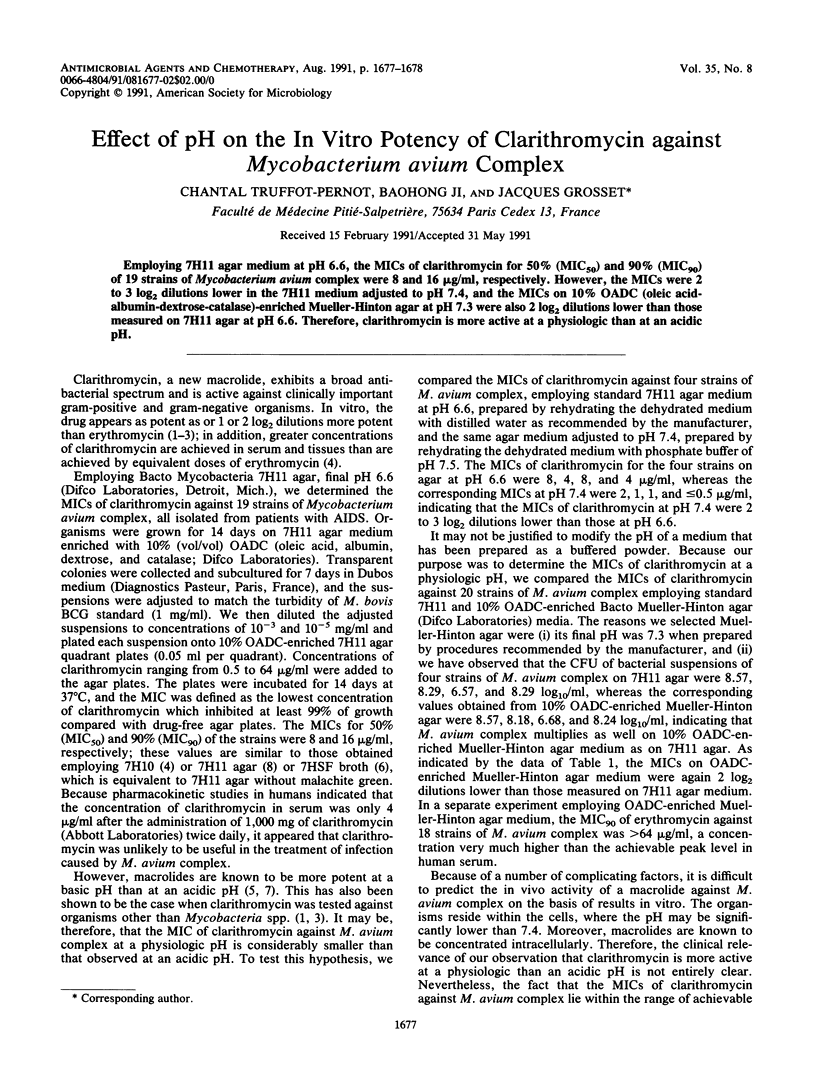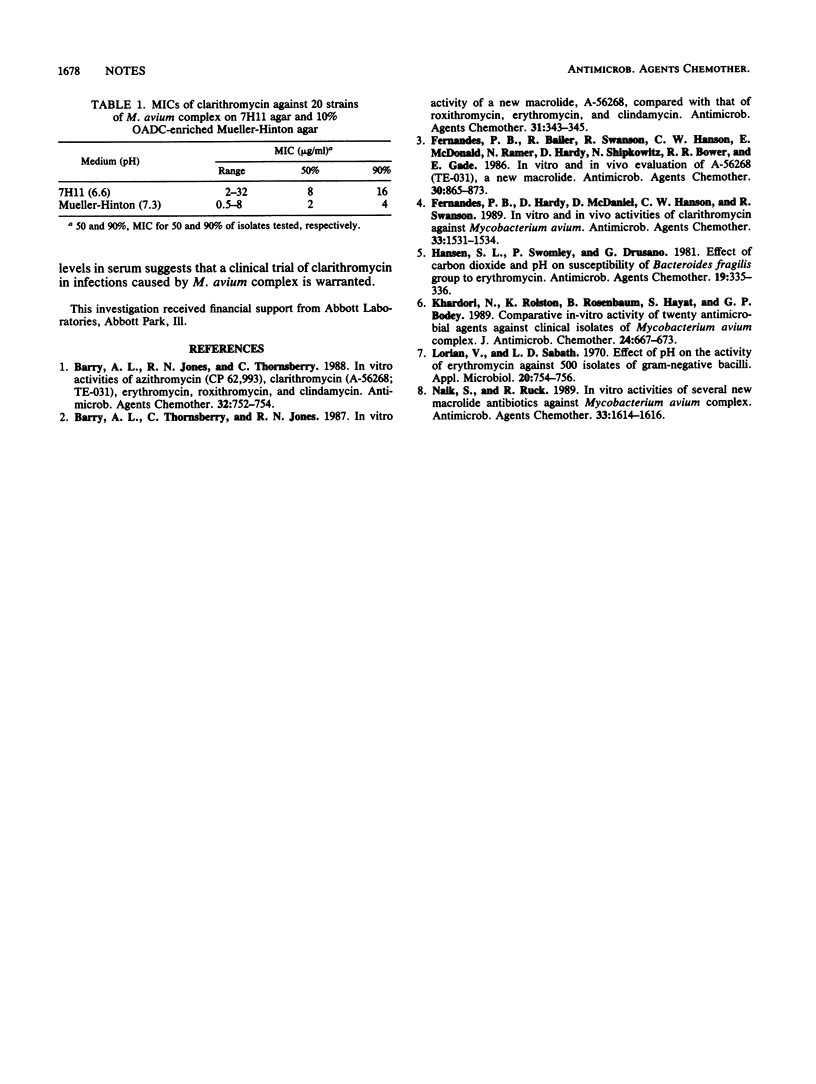Abstract
Employing 7H11 agar medium at pH 6.6, the MICs of clarithromycin for 50% (MIC50) and 90% (MIC90) of 19 strains of Mycobacterium avium complex were 8 and 16 micrograms/ml, respectively. However, the MICs were 2 to 3 log2 dilutions lower in the 7H11 medium adjusted to pH 7.4, and the MICs on 10% OADC (oleic acid-albumin-dextrose-catalase)-enriched Mueller-Hinton agar at pH 7.3 were also 2 log2 dilutions lower than those measured on 7H11 agar at pH 6.6. Therefore, clarithromycin is more active at a physiologic than at an acidic pH.
Full text
PDF

Selected References
These references are in PubMed. This may not be the complete list of references from this article.
- Barry A. L., Jones R. N., Thornsberry C. In vitro activities of azithromycin (CP 62,993), clarithromycin (A-56268; TE-031), erythromycin, roxithromycin, and clindamycin. Antimicrob Agents Chemother. 1988 May;32(5):752–754. doi: 10.1128/aac.32.5.752. [DOI] [PMC free article] [PubMed] [Google Scholar]
- Barry A. L., Thornsberry C., Jones R. N. In vitro activity of a new macrolide, A-56268, compared with that of roxithromycin, erythromycin, and clindamycin. Antimicrob Agents Chemother. 1987 Feb;31(2):343–345. doi: 10.1128/aac.31.2.343. [DOI] [PMC free article] [PubMed] [Google Scholar]
- Fernandes P. B., Bailer R., Swanson R., Hanson C. W., McDonald E., Ramer N., Hardy D., Shipkowitz N., Bower R. R., Gade E. In vitro and in vivo evaluation of A-56268 (TE-031), a new macrolide. Antimicrob Agents Chemother. 1986 Dec;30(6):865–873. doi: 10.1128/aac.30.6.865. [DOI] [PMC free article] [PubMed] [Google Scholar]
- Fernandes P. B., Hardy D. J., McDaniel D., Hanson C. W., Swanson R. N. In vitro and in vivo activities of clarithromycin against Mycobacterium avium. Antimicrob Agents Chemother. 1989 Sep;33(9):1531–1534. doi: 10.1128/aac.33.9.1531. [DOI] [PMC free article] [PubMed] [Google Scholar]
- Hansen S. L., Swomley P., Drusano G. Effect of carbon dioxide and pH on susceptibility of Bacteroides fragilis group to erythromycin. Antimicrob Agents Chemother. 1981 Feb;19(2):335–336. doi: 10.1128/aac.19.2.335. [DOI] [PMC free article] [PubMed] [Google Scholar]
- Khardori N., Rolston K., Rosenbaum B., Hayat S., Bodey G. P. Comparative in-vitro activity of twenty antimicrobial agents against clinical isolates of Mycobacterium avium complex. J Antimicrob Chemother. 1989 Nov;24(5):667–673. doi: 10.1093/jac/24.5.667. [DOI] [PubMed] [Google Scholar]
- Lorian V., Sabath L. D. Effect of pH on the activity of erythromycin against 500 isolates of gram-negative bacilli. Appl Microbiol. 1970 Nov;20(5):754–756. doi: 10.1128/am.20.5.754-756.1970. [DOI] [PMC free article] [PubMed] [Google Scholar]
- Naik S., Ruck R. In vitro activities of several new macrolide antibiotics against Mycobacterium avium complex. Antimicrob Agents Chemother. 1989 Sep;33(9):1614–1616. doi: 10.1128/aac.33.9.1614. [DOI] [PMC free article] [PubMed] [Google Scholar]


